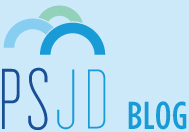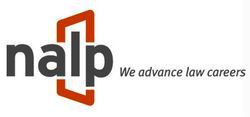PSJD has pulled up stakes this week and decamped to NALP’s Annual Education Conference. At the moment, we’re preparing for the arrival of our conference participants on Wednesday. (We hope to see you there!) In particular, I’m excited for the large number of public-interest-oriented meetings taking place over the course of the conference. To kick your week off, here’s a piece from Niloufar Khonsari, the founder of Pangea Legal Services and a presenter at the conference. Enjoy, and remember–if you’re attending the conference you can follow-up about affordable fee work with her in person on Friday!
–Sam
The Low Down on Low Bono:
Identifying a Need and Starting up a Nonprofit Organization
While the government funds many important pro bono programs in the United States, low-income communities are still underserved in many legal service areas: housing, family, criminal justice, public benefits, immigration and more. This article focuses on the gap in immigration and removal defense services in Northern California and how nonprofit organizations can sustain themselves while filling some of that gap.
More than 29,000 immigrants currently find themselves in court proceedings at the San Francisco Immigration Court.[1] Nationally, there are over 431,000 immigrants in court proceedings. With increased deportations nationwide, there is a clear need for court and immigration defense services. Immigrants in removal proceedings need a lawyer because of the complexity of immigration law and the negative consequences of deportation. Also, many immigrants in the court process are eligible for relief or protection under existing laws, and they may have a pathway to citizenship.
Unfortunately, only a small percentage of immigrants have immediate access to legal counsel. Private immigration attorneys can be prohibitively expensive. And most nonprofits, even in San Francisco, do not represent clients in complex removal proceedings. The key to this gap is providing access to counsel.
Pangea Legal Services (Pangea) is one example of an organization that was created to help bridge the access gap. While it hasn’t come without its challenges, Pangea created a low-fee, sliding-scale model that grew to five full-time employees between January 2013 and December 2014. Low bono, or affordable fee models similar to Pangea are growing around the country in various areas of law, creating a financially viable avenue to fill the justice gap.[2]
Be Entrepreneurial and Find the Gaps. You don’t need decades of experience to start an organization. As Steve Jobs said, “Life can be much broader once you discover one simple fact, and that is – everything around you that you call life, was made up by people that were no smarter than you. And you can change it, you can influence it, you can build your own things that other people can use.” The entrepreneurs of Silicon Valley tend to have three things in common: 1) identifying a solution to a problem, 2) pursuing that solution proactively, and 3) committing to creating social value. Pangea was able to identify that within the area of immigration, deportation defense was significantly underserviced by the nonprofit community. This discovery was made by volunteering in the immigration nonprofit community, participating in policy advocacy work around immigration issues, and surveying senior advocates in the field about the needs within immigration legal services. Identifying this gap and focusing on creating a solution for it was central to Pangea’s startup.
Get a Mentor, Ask for Advice. Founder of ZenPayroll, Joshua Reeves, said that not having industry experience can be a real asset, as long as you recognize what you don’t know.[3] Identifying what you don’t know then can be addressed by seeking guidance and mentorship in that field. The legal field is vast and complex and so is the world of human resources, employment law, finance, and nonprofit governance. There are many online resources and listservs, but personal relationships with experts in the field are the most helpful. Many practitioners and experts are open to meeting with and advising nonprofits; connecting can be as easy as making a phone call or sending an email. For its governance structure and compliance efforts, Pangea is currently in the process of building a team of advisors with expertise in areas such as finance and employment law. For its legal services, Pangea has a network of at least a dozen senior attorneys from whom attorneys seek mentorship regularly. The organization has a weekly one-hour mentorship session with rotating senior immigration attorneys to consult on legal strategy, procedural questions, and complicated immigration cases. The key to successful mentorship and seeking advisors is identifying your needs and organizational gaps.
Create Partnerships, Learn from Other Nonprofits. Nonprofit organizations often collaborate with other nonprofit organizations on advocacy efforts, direct actions, clinics, and other projects. Join their circles and learn from them! This can be viewed as an extension of your organizational efforts to seek mentorship and formal advisors. Networks and partnerships with other organizations are essential to strong advocacy and quality legal representation, as they offer many tools, lessons, and resources for your organization. Your local chapter of the National Lawyers Guild (NLG) could be a great starting point. Pangea staff began participating in advocacy coalitions and learning from other nonprofits through the local NLG-Bay Area immigration committee and the San Francisco Immigrant Rights Defense Committee (SFIRDC). Many of Pangea’s cases would not be successful, but for the strong partnerships, friendships, guidance and support from partner groups.
Obtaining 501(c)(3) status is not hard. Registering a 501(c)(3) is logistically easier than you think. You will need a Board of Directors, Articles of Incorporation, and Bylaws. The instructions laid out in Form 1023 specify that you should set aside approximately ten hours to prepare and assemble your IRS filing. While you can do it yourself, there are many pro bono attorneys at law firms, nonprofit organizations such as The Foundation Center, or low fee attorneys that can help you prepare your 1023. Pangea received guidance from individuals who previously registered organizations, and we prepared our own forms without formal legal assistance. This IRS process is more straightforward than one might believe; the key is to just do it.
Go Low Bono. Low bono is an alternative to the corporate method of hourly billing at market rates. Low bono could mean offering your legal services at below-market rates and allowing clients to pay through a low fee payment plan. The IRS has no cap on fees for services or products for nonprofit organizations, so the only restriction is the ability to pay of the community you seek to serve. There are very indigent clients who cannot pay any fee and require pro bono services. However, there are also many hard-working low-income and moderate-income individuals who are more than willing to pay relatively small fees in increments (a few hundred dollars a month). Many clients actually prefer to pay a small fee and invest into their case. Pangea’s current low bono model is one that has a set fee for service, with a sliding scale monthly installment plan. Organizationally, finding the right balance between being sustainable and accessible can be challenging, and it is a continual trial and error process. While there are ongoing fee adjustments and necessary revenue diversification efforts in place at Pangea, the sliding scale low bono structure has created a starting point to create greater access to counsel for low-income immigrants.
Financial Assistance for Student Debt. If you are going to hire lawyers straight out of law school and retain them, or, if you are in debt yourself, going low bono in a private practice will likely not pay your student loans. Fortunately, federal loan payment and forgiveness programs exist, and many law schools provide loan repayment assistance to attorneys working in nonprofit organizations and government agencies. Thus, incorporating as a nonprofit organization can provide critical financial assistance to your likely indebted staff.[4]
Scale-up with foundation support and grants. Foundation and other grant funding is important to help you build capacity, scale up efforts, diversify the revenue pool, and increase pro bono services. It can also support your engagement in non-revenue producing work such as legal empowerment, education efforts, and policy advocacy work. Starting with a sliding-scale fee structure can make your organization sustainable while leveraging foundation support for expansion efforts. There is a worry that this may reduce the funding pool for already existing free legal service providers; however it is possible that low bono structures will attract a new set of funders that previously did not exist, thus increasing the funding pool for all. Funders prefer organizations that have diverse sources of revenue and are not solely reliant on one funding stream. A low bono model allows you to create a consistent revenue stream of funds enabling you to do your work as you build on your organizational mission and vision; it creates a viable platform for funders to see your potential as a partner. For Pangea, the revenue brought in through low fees has leveraged additional resources (from the San Francisco and Silicon Valley Community Foundations) to go further than a new organization could if it were seeking funding from point zero.
Be Excellent. This means working hard, focusing on thoroughness, addressing all issues and questions head-on, not leaving any pages unturned, and submitting timely products. It also means reacting to developments quickly, going the extra mile, and delivering for the community. Recognition of quality work happens quickly in the nonprofit community and building credibility is vital to a strong foundation. In the long term, the combination of dedication to excellent services and accessibility through low fees is a guaranteed recipe for success.
The nonprofit low bono model is an important capacity builder in developing access to legal services. It is efficient, sustainable, and scalable. By creating organizations based on the low bono model, the legal needs of our low- and moderate-income communities can be increasingly met to create greater pathways to relief and safety.
——
Niloufar Khonsari is an immigration attorney and the founder of nonprofit organization, Pangea Legal Services, available at nilou [at] pangealegal.org
[3] Joshua Reeves, “A Marathon, Not a Sprint,” Stanford Entrepreneurial Thought Leaders Podcast, Feb. 25, 2015.
[4] It should be noted that many low bono private practice attorneys can use “Pay as you Earn” to pay back their student loans, which caps their payments based on their income and provides loan forgiveness after 20 years.








